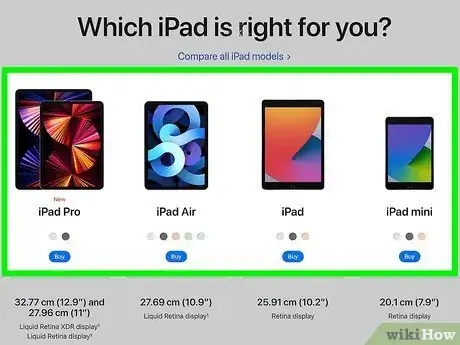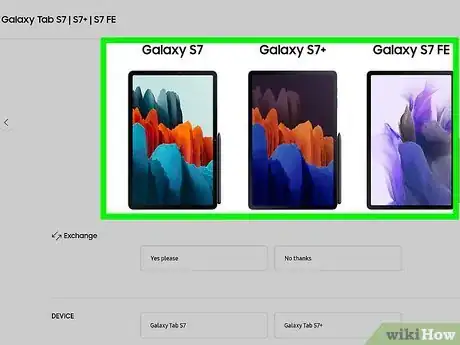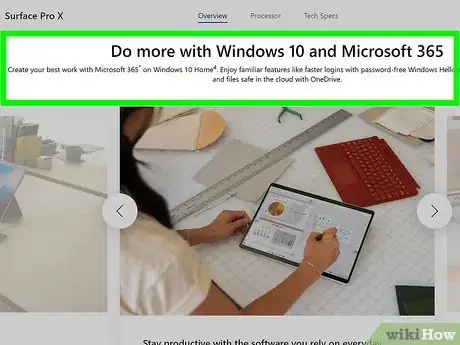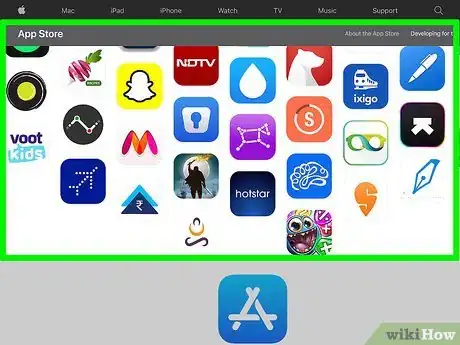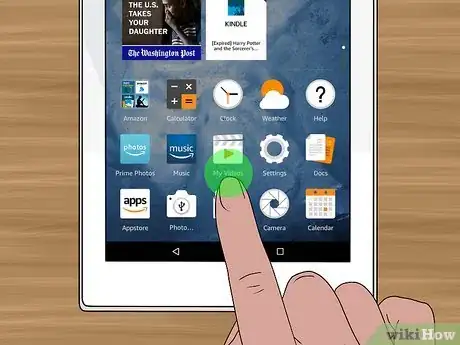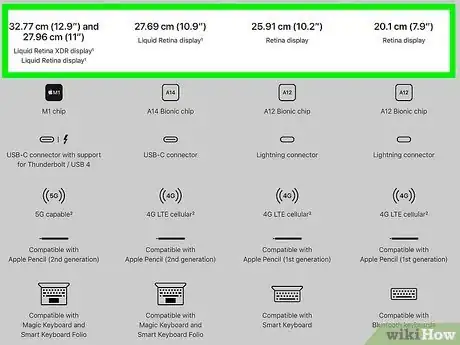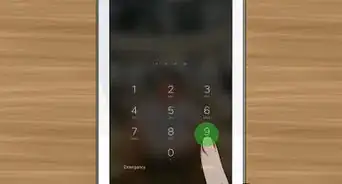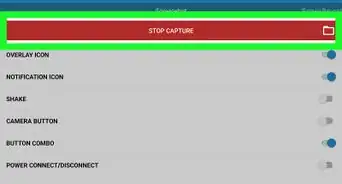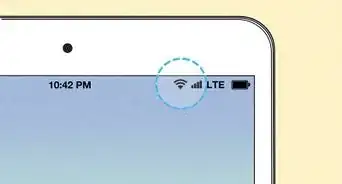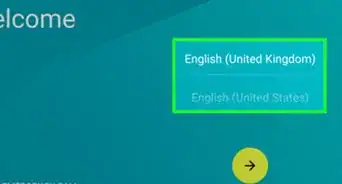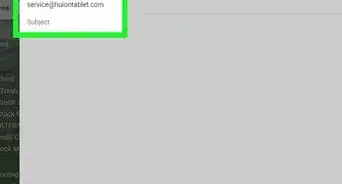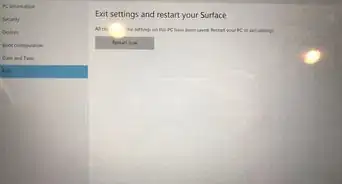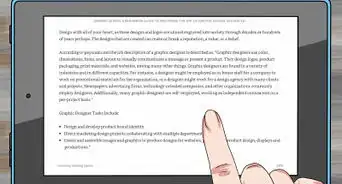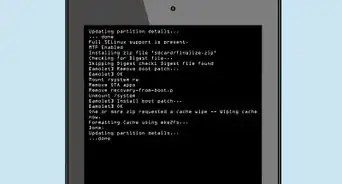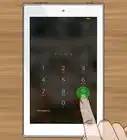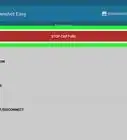wikiHow is a “wiki,” similar to Wikipedia, which means that many of our articles are co-written by multiple authors. To create this article, 17 people, some anonymous, worked to edit and improve it over time.
wikiHow marks an article as reader-approved once it receives enough positive feedback. In this case, several readers have written to tell us that this article was helpful to them, earning it our reader-approved status.
This article has been viewed 127,993 times.
Learn more...
Looking to invest in a new tablet? A tablet lets you play games, watch video, send email, check Facebook, and even work on the go. Choosing the right tablet, however, can be a headache. The electronics store is a sea of competing models, and online stores are like buying blind. With a little knowledge of what you want and need, you can quickly narrow down your choices and find the perfect tablet.
Steps
Choosing Your Operating System
-
1Look at what you currently use. When it comes to buying a tablet, the main choice you will need to make is the operating system. The operating systems for tablets fall into three basic camps: Apple (iOS), Google (Android), and Microsoft (Windows). The one you pick will be based a lot on the kind of things you do on your regular computer and smartphone.[1]
- If you already have a smartphone with one of these operating systems, you may want to consider picking up a tablet running the same OS. Both Android and iOS behave almost exactly the same across devices, making getting used to your device much easier. This will also allow you to connect your devices easier and share things between them.
- If you regularly use services provided by one of these operating systems, (iCloud, Google Drive, OneDrive, etc.), you may want to pick a tablet from the same OS. This isn't necessary, however, as there are apps available for all devices that allow you to access other services.
-
2Consider the pros of iOS. Apple's iOS is what powers the iPad, the device that kicked the tablet market into high-gear in 2010. iOS is known for it's intuitive interface, and Apple products are revered for their construction quality.
- Seamless integration with OS X and iTunes purchases.
- Easy-to-use interface.
- Tons of apps, usually first to get the latest and greatest.
- iMessage allows you to send messages for free across all Apple devices.
Advertisement -
3Consider the pros of Android. Google's Android operating system is the most popular mobile operating system on the planet, thanks in large part to the massive number of devices that can run it. Android used to be a bit more finicky than iOS, but updates have brought a large number of improvements over the years.
- Seamless integration with your Google account and Play Store purchases.
- Android devices can be significantly cheaper than iOS or Windows.
- Lots of customization and rooting options for advanced users.
- Large variety of models and manufacturers to choose from.
- Android supports multiple user logins for one device.
- The Android operating system can be modified by the manufacturer to be very customized. For example, the Amazon Kindle Fire runs a modified version of Android built around the Amazon ecosystem.
-
4Consider the pros of Windows. Windows isn't available on as many devices as iOS or Android, but it can be a good choice if you work heavily with Office and other Microsoft products. Windows 10 is currently the main Windows mobile operating system, and some versions are as full-featured as a regular computer.
- Can run a variety of Windows programs, including Office. Surface Pros run a full desktop version of Windows 10.
- Seamless integration with your Microsoft account and Windows Store purchases.
- Pairs well with Xbox. Smartglass allows you to use your tablet as a secondary interface for many Xbox 360 and Xbox One games.
- Most Windows tablets come with detachable keyboards.
-
5Set a budget. Low-end tablets start at around $200 USD, while the highest-priced iPad will set you back $800 USD. A lower price usually means less processing power and limited storage. The quality of the display will also suffer on the low-end models.
-
6Look at the app selection. Apps are the main point of having a tablet, and the selection of apps will dictate a lot of what your device can do. You can browse each operating system's app stores using your web browser. Take a look through the app stores and see which operating system has more apps that appeal to you and your app budget.
- Not all apps are optimized for tablet use, but more and more are releasing tablet versions.
Looking at Tablets
-
1Try tablets out in a store first. Even if you're planning to buy online, see if you can try out a few different tablets at a retail store. This will give you a basic feel for how the models perform, and can help drive your purchasing decision. Just don't let the salespeople try to talk you into something you don't want.
-
2Test to see how the tablet handles loading and closing apps, as well as switching in between open apps. Try out a graphically intensive game (if one is available on the demo model) to see how the tablet handles a high load.
-
3Check out the specifications. There are a few different specs that you'll want to pay attention to when shopping for tablets. Different specs will be relevant for different tablets. For example, if you're deciding between iPads, the processor won't make a difference since all new iPads share the same processor. When comparing Android tablets from different manufacturers, however, processor and RAM specifications become much more important.
- Resolution - This is the size of the display, expressed in the number of pixels shown on the screen. The larger the resolution, the clearer your image will be.
- Processor - This is the chip that drives the tablet. A tablet with a quad-core processor will generally perform better than a tablet with a dual-core processor. If you are looking at iPads, all new iPads share the same processor.
- Battery life - The published battery life can't usually be trusted, since it is measured under the most optimal conditions set by the manufacturer. Try to find some reviews online to compare battery life with normal usage.
- RAM/Memory - This is the memory that allows your tablet to multitask and run memory-intensive apps. This specification is really only apparent if you're comparing Android models.
- Storage - This is the amount of space that the tablet has to store media, apps, and any other files and documents. Storage is the primary difference between different tablets in the same model line. Check if the tablet supports SD or MicroSD for storage expansion. As more and more people store files in the cloud, the need for large amounts of physical storage has gone down.
- Cellular - If you want to use a cellular data plan to be able to browse the internet anywhere you have a cellular signal, you'll need a tablet that supports SIM cards. All tablets can connect to wireless networks that you have access to.
-
4Check out the camera. If you plan on taking a lot of pictures with the tablet, check out the camera options. Generally, tablets do not have the best cameras, though some models make a point of touting powerful cameras. Most tablets have a camera on the back and a less-powerful camera on the front for video chatting.
-
5Choose a size. Tablets generally come in two different sizes: 10-inch and 7-inch. Screen size is a personal preference; larger screens allow for easier video watching and typing, while smaller tablets will generally be more portable. Apps generally work with both 10-inch and 7-inch tablets, though some are only optimized for one size.
- Be sure to check out the screen brightness and clarity as well as the size.
- Some tablets offer different sizes (8.9" for example), but most tablets will fit into one of these two sizes.
Community Q&A
-
QuestionI am using a Windows-based mobile phone. Is it possible to use an iPad?
 Community AnswerSure. There is no need to match your phone and your tablet; some people just find it convenient. You can use an iPad regardless of what other devices you have.
Community AnswerSure. There is no need to match your phone and your tablet; some people just find it convenient. You can use an iPad regardless of what other devices you have. -
QuestionWhat would be a good, inexpensive 7" tablet for playing games and doing simple online tasks?
 Community AnswerThe Samsung Galaxy Tab Pro is a good choice, but there are plenty of less expensive options out there as well. Just make sure you have at least 16 GB so you have enough memory.
Community AnswerThe Samsung Galaxy Tab Pro is a good choice, but there are plenty of less expensive options out there as well. Just make sure you have at least 16 GB so you have enough memory. -
QuestionWhat does the word mobile mean with relation to a tablet?
 Community AnswerIt usually means that it is easy to take on the go and travel with. In other scenarios, mobile may mean that, like many cellular devices, the tablet is able to have phone service, making it the same as any other smartphone, except much larger.
Community AnswerIt usually means that it is easy to take on the go and travel with. In other scenarios, mobile may mean that, like many cellular devices, the tablet is able to have phone service, making it the same as any other smartphone, except much larger.

